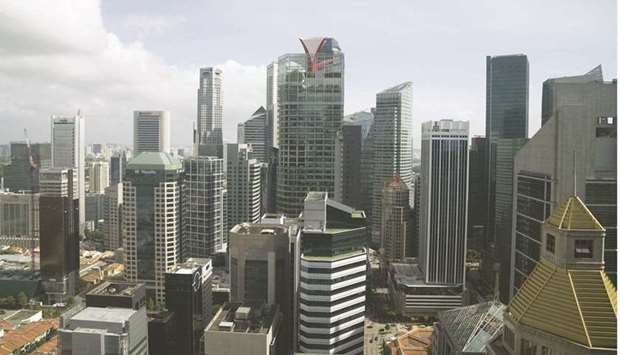The underperformance of Singapore-dollar bonds is making way for buyers to return as the nation now offers the highest real yields among top-rated countries.
Singapore’s bonds were sold off in mid-February after the government announced plans to sell additional debt to finance infrastructure projects in the city state. The nation’s inflation-adjusted 10-year yield now offers a 62 basis points upside, compared to negative spreads for most other AAA-rated countries.
“The repricing has taken place, and at the end of the day, supply of Singapore dollar bonds will still be modest compared to most other countries,” said Irene Cheung, senior strategist at Australia & New Zealand Banking Group Ltd. She expects decent demand for the new bonds to fund infrastructure projects.
The new debt will be called Singapore Government Securities (Infrastructure) and the existing bonds will be renamed to SGS (Market Development), according Ministry of Finance and Monetary Authority of Singapore spokespersons. Except for the different use of proceeds, the two types of bonds are interchangeable from the perspective of investors, the authorities said.
While the added supply has jolted bond investors, analysts see long-term benefits of the infrastructure funding plan to outweigh the supply concerns.
Singapore’s bond investors have been spared from a debt deluge facing other major markets as local authorities used reserves to fund coronavirus relief efforts. The city state has been selling bonds to invest proceeds and develop a yield curve rather than to plug a budget deficit.
“SGS (Infrastructure) will undoubtedly be a long-term positive for the development of Singapore’s bond market,” said Winson Phoon, head of fixed-income research at Maybank Kim Eng Securities Pte in Singapore. “Such an initiative can help add diversity, widen the investor base and perhaps enhance liquidity depth of Singapore bonds.”
The first SGS (Infrastructure) issuance is expected to start in the fourth quarter of this year and Phoon sees the first issuance of S$2.7bn ($2bn) coming in November.
SGS (Infrastructure) issuance would typically tilt toward the long-end of the yield curve to better match the useful life of the underlying infrastructure, the authorities said, adding that market development bonds can be shorter dated to manage overall duration.
Bond issuance with tenors of more than 10 years are rare in Singapore. The authorities offered 30-year debt in January and plan to auction 15-year and 20-year bonds in April and August, respectively.
SGS (Infrastructure) will be issued under the proposed Significant Infrastructure Government Loan Act. There will be a limit of S$90bn for borrowing under this act, based on the expected expenditure for major infrastructure projects over the next 15 years.
Singapore will also issue up to S$19bn of green bonds on select public infrastructure projects for a start. This would comprise both green bonds as a subset of SGS (Infrastructure) and those that would be issued by Statutory Boards, according to the MOF and MAS.
“While increased bond supply is generally viewed as a negative signal, Singapore is proving to be different,” said Eugene Leow, a rates strategist at DBS Bank Ltd in Singapore. “The overall increase in SGS supply will be calibrated so I won’t be overly concerned,” Leow said.

Commercial and residential buildings in the central business district in Singapore. The underperformance of Singapore-dollar bonds is making way for buyers to return as the nation now offers the highest real yields among top-rated countries.
